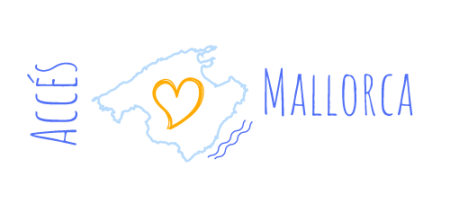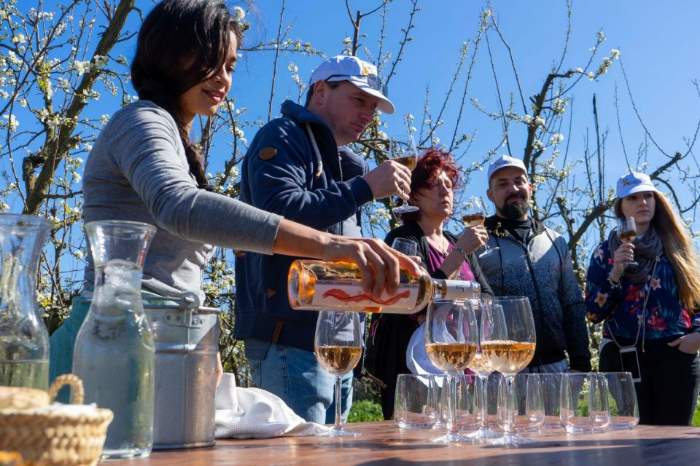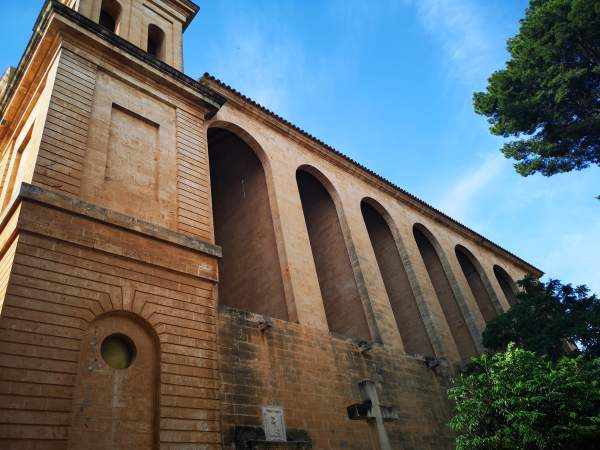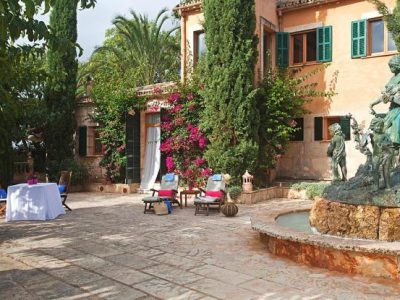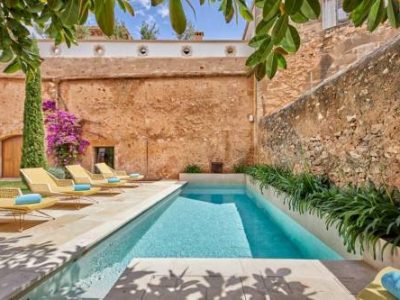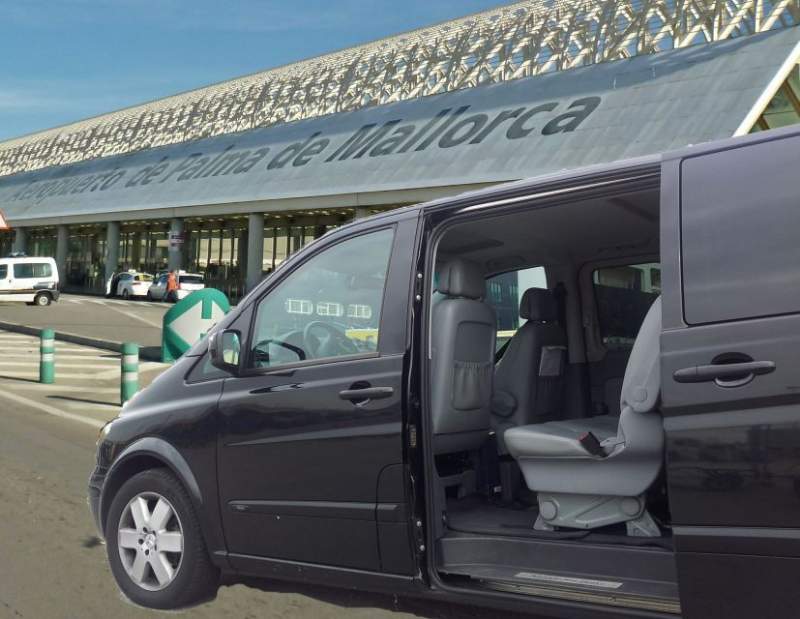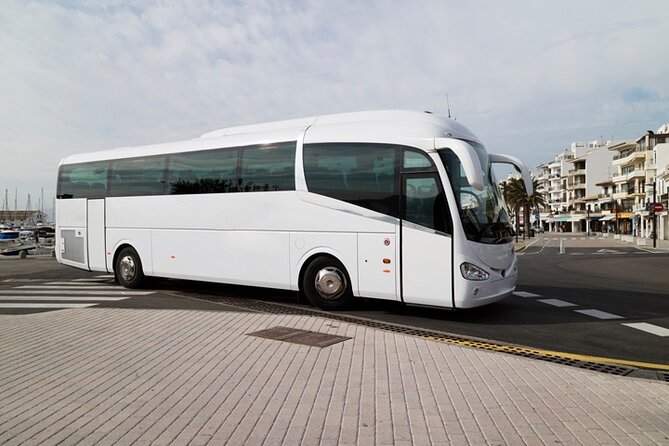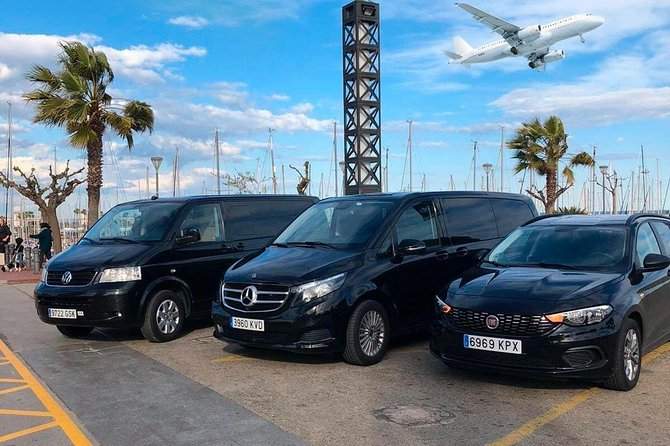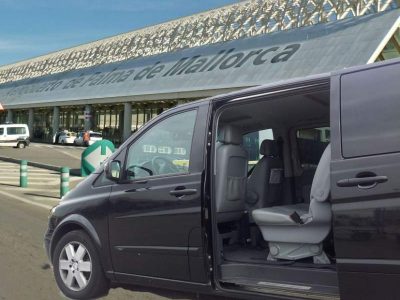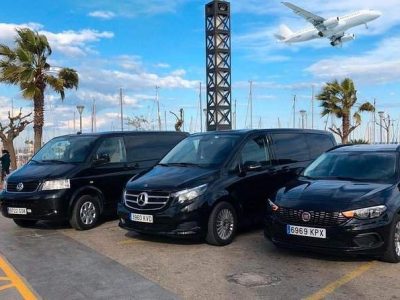All your holiday planning needs in one place, letting you book direct and benefit from official online rates
- Places To Go
- Things To Do
What’s Your Interest?
Traveling with kids
- Blog
Campos, Mallorca, Things to do and see, hotels, market
Campos is a typical agricultural area where rural charm and traditions fills the atmosphere everywhere you turn. The area carries a long and rich cultural heritage evidenced in the many landmarks, the religious constructions and the annual fairs held in the town.
Campos has gradually become a more popular holiday base due to the many luxury finca hotels and agroturismos (farms) that allows for full relaxation and serenity in charming and tranquil settings.
- This is where I want to go!
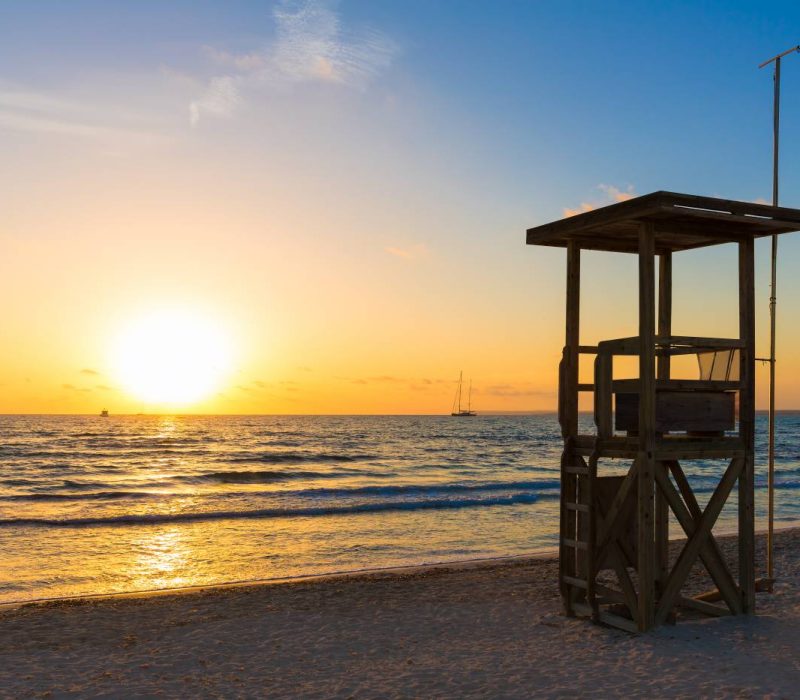
Why visit Campos?
Is Campos worth visiting?
Yes, Campos is very much worth visiting, and quite frankly, one of the best places to stay if you’re looking to be spoiled in authentic settings.
What is Campos famous for?
Campos is a traditional agricultural area, yet a pioneer that turned the area into one of the wealthiest back in the 19th and 20th century. Campos is famous for:
- Milk
- Meat
- Es Trenc beach
You may wonder why milk and meat are so special. But really, how many cows have you ever seen in Mallorca? Campos was a protagonist in meat and milk production and, the meat has been sought for all over Spain.
Things to do and see in Campos
Visit the Son Lladó Eco-Museum
Ever been curious on the agrarian lifestyle, or wondered how agriculture has developed throughout the centuries? Perhaps you have a dream of moving away from the city, or to Mallorca, to start your own sustainable production becoming self-sufficient and need a little know-how? Whatever your reason be, make sure to visit the Ecomuseu situated in the agroturismo of Son Lladó, and you will have all questions answered. The museum takes you on a journey of the Mallorcan countryside and educate you in how different types of mills work, how things were done in the past etc.
Església de Sant Julià
Some incredible artworks are to be found inside the Neoclassist church of Sant Julià (Saint Julian).
Spend a day at es Trenc, Mallorca’s biggest undeveloped beach
One of the most renown and undeveloped beaches on the Mallorcan coasts is actually found here in Campos, namely the beach of es Trenc. Its silky soft white duvet of sand and low crystal clear water stretches about 2km with plenty of room for sunbathing and beach activities.
Do birdwatching in the wetlands of Salobrar de Campos
The second largest wetland in Mallorca is found in the southern part of Campos, namely the es Salobrar reserve. This massive eco-system of dunes and canals is home to a wide variety of birds and other species that enjoy the great natural sources here.
Visit the ostrich farm of Artestruz
Artestruz is a family-driven ostrich farm situated not far from the beautiful es Trenc beach. On the farm you can meet and get close to these curious birds, taste ostrich eggs and even ride one. There are many fun things to do on the farm, as well as many things to learn.
Oratory of Sant Blai, a Medieval church
The small oratory of Sant Blai was the first Christan chapel to be erected in this area following the Catalan conquest of Mallorca in the early 13th century.
CYCLING IN THE COUNTRYSIDE
One of the major activities in Campos is road cycling in the huge network of rural country roads.
Book your trip
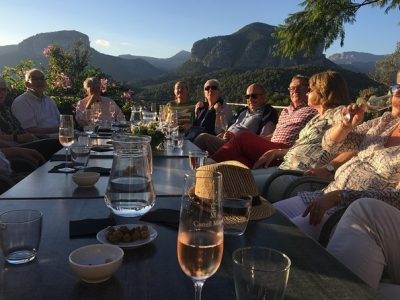
Discover the varieties of wines, olive oil and food on Mallorca
- 1 day
From: €225
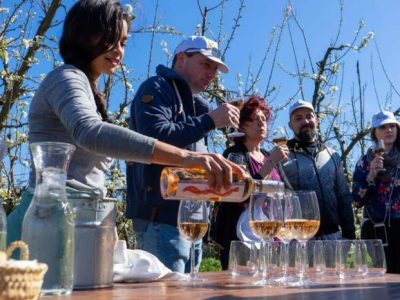
Mallorca Winery Tour: Full-Day Winery Tour for Small Groups
- 5 - 6 hours
From: €189
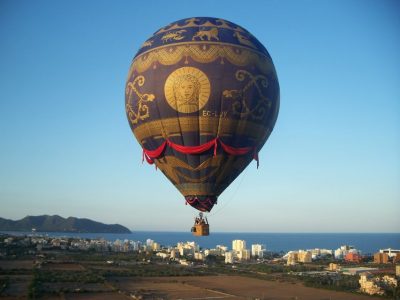
Once in a Lifetime Experience: Mallorca from Above
- 2.5 hours
From: €180
FAQ
Campos is particularly known for its milk and meat production that is sought-for in all of Spain.
The market in Campos is held on Thursdays and Saturdays.
Campos is easy to reach, it is located close to the freeway. From Palma, it should take you only about 20 minutes by car.
Campos village is located just 6 km inland from the biggest undeveloped beach in Mallorca, the es Trenc beach.
Events in Campos


Weekly market in Campos
The market in Campos is held every Thursday and Saturday in the Plaça de sa Creu. The market in Campos is a traditional farmers market offering a great selection of vegetables, fruits, meats and cheeses. Visiting the market gives you a great opportunity to not only sample some of the local specialties, but also sample the unique atmosphere and indulge in a tradition held ever since the town was founded in the early 14th century.
The Saturday market is extended to also include secondhand items, creating an even more vibrant atmosphere.
During July and August, a market is held in Sa Rapita on Wednesdays and Saturdays.
Annual events and happenings
January
Festes de Sant Julià
Sant Julià is the patron saint of Campos, and celebrated each year in the beginning of January with a great festival.
Sant Julià (Julianus Hospitator) is the patron saint of Campos, and celebrated every year in January. The festivities here are often overlooked in Mallorca, falling between Christmas, Holy Three Kings and the celebration of Antonius the Holy, all of which take place within a month.
But if you are in the area at the beginning of January, then you should head into the city and experience this traditional event on January 9. Here you can experience some very special cultural traditions, among others, dances by the dance group els Cossiers, a dance act in seven pieces that is typical of Mallorcan culture. You can also experience performances with Goig’s, poetic compositions of songs written for saints performed by choirs at religious events.
Where: Campos town
When: January 9th
May
Fira de Maig / Fira de ses vaques
If you are looking to experience true Mallorcan soul really feel the rural life of the countryside, come to Campos in May to participate in the May fair, also known as the “Cow Fair”. As the name suggests, this fair pays a special tribute to cows, one of the major sources of income in Campos. During the fair, you can browse, purchase and sample a wide range of delicacies, crafts, tools and other typical stuff of agrarian and artisan character. Shows, exhibitions, concerts are too a part of the program when spring is being celebrated. One of the highlights for the locals, is the cow milking contest, paying homage to an industry synonymous to the area, and hads made Campos one of the major export areas of milk in Spain.
Where: Campos town
When: Beginning of May
July
Festes de Mare de Deú de Carme
Most traditional fishing villages celebrate Our Lady of Mount Carmel, as she is the protector of seamen. And so does the village of Sa Rapita. One of the highlights of this festival, is the procession at sea. But you can look forward to a fully packed program of fun and cultural events and activities during the two weeks the festivities are held, such as open-air dinners, concerts, markets, exhibitions, games, contests, water sports, dancing etc. Basically, it is an expanded beach party for adults, just wonderful.
Where: Sa Rapita
When: Middle of July
August
Celebration of summer
Summer is here and it will be celebrated with a big festival in town. Open-air dinners, stands, talks, concerts, games, competitions and more fun activities marks the summertime in Campos. The festival is coinciding with a rather new initiative, the “AN”, an art fair inaugurated just a few years ago but already an important part of the summer celebrations. The art fair is dedicated to unconventional art, which opens a new dimension of creativity, a wonderful contrast to the authentic and traditional surroundings it is held in.
Where: Campos
When: Middle of August
October
Autumn fair
Gastronomy is a keyword when talking about the local soul and culture in Campos, and what better way to celebrate gastronomy than having a fair concentrating on food. Traditionally, this fair was dedicated to “matances”, butchers, as late autumn was typically the time to slaughter pigs. It was also the time to make the famous Sobrassada sausages, which is too celebrated with a mini-fair coinciding with the autumn fair. Many of the restaurants and bars in Campos create a special fair-menu, tapas routes and food tastings. If you are a foodie, and a sucker for great meat and sausages, you do not want to miss out on the autumn fair in Campos.
Where: Campos
When: Late October
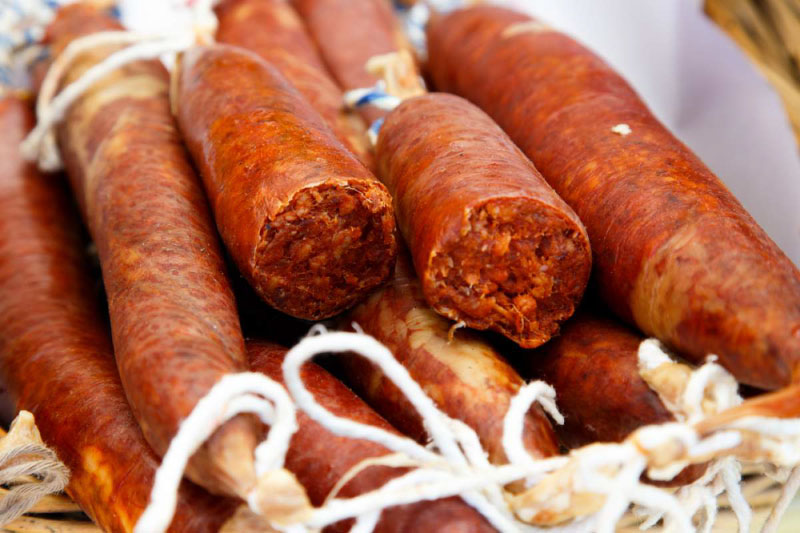
Support Local
Supporting local communities during your travels can have a profound impact. Stock up with groceries locally, stop in an artisan shop or enjoy a refreshment at a restaurant or bar. Now more than ever, these small businesses need support from travelers near and far.
Get to know the Campos area and its history
Campos is a town and municipality located in the southeastern region of Mallorca called Migjorn, a region that also comprise the municipalities of Llucmajor, Ses Salines, Santanyí and Felanitx.
Campos is a tranquil and authentic oasis located between the fields of the rural countryside and the crystal clear waters of the Mediterranean. The true Mallorcan soul is present in the atmosphere, and you will not need to look far to discover the welcoming spirit of the people, the gastronomical experiences and great traditions practiced here.
Unlike most other coastal areas of the island, Campos does not have many hotels. In return, there are a number of charming fincas and agroturismos in the area completing an authentic rural holiday.
The municipality covers a surface of 14.947,55 ha whereof 1.855 of those are protected areas. As of 2018, the total population was 10.610 inhabitants divided in six areas, Campos town, Sa Rapita, Sa Rapita Dalt, Sa Vinyola, Ses Covetes and Sa Sorda.
History of Campos
In this section of the guide, we will walk you through some of the key periods and events in the history of Campos, so you will (hopefully) have a better understanding of the area when you visit.
Prehistory and Talaiotic culture
When talking about human occupation in the area, we can go as far back as 1,700 BC, back to the Bronze Age. From these very early days, the burial caves of Ses Talaies, Son Toni Amer, Morro de Son Coves and Son Xorc, dating from about 1,700 BC – 1,200 BC.
Some of the first constructions was built around 1,500 BC, the so-called “navetas”, a name they have acquired due to their keel-like shapes.
One of the most fascinating periods of the Balearic prehistory, is the Talaiotic culture. A culture that was made by a mix of indigenous peoples, ancient Greeks and Phoenicians that occurred in the late Bronze Age about 1,200 BC and lasted until the Roman conquest in 123 BC. The name of this culture was given as the word “talaia” means “watchtower” or “lookout” in Catalan, and that was the over-shining characteristic of the mindset of the people of that time, their constructions became military oriented.
Explorers and colonizers from the ancient east traveled across the Mediterranean sea in search of land and metals. It was known that the lands of current day western Europe were rich on metals and minerals. In present day Girona, Catalonia, the ancient Greeks of Phocaea (present day Foça, Turkey) founded the city of Empúries in the late 5th century. The Phoenicians too was seeking to expand their territory and enhance their trade in the Mediterranean, they were particularly after the ore found in the Iberian Pyrite Belt (stretch between northwest Portugal and Sevilla). The Phoenicians established textile factories in most of their colonies, in which they had a predilection for islands and territories close to the sea, which again proves their trading activities.
With these things in mind, it is now easier to understand the life of the Talaiotic people in Mallorca, they were agrarians, producers, traders and warriors. The philosophy behind their constructions came from a defensive point of view, they needed to be guard of potential threats. In Campos, there are several very interesting Talaiotic sites, i.e. Son Baco and the village of des Cap des Sol.
From the late 3rd century BC, there are remains of a Phoenician factory found in the area of the es Trenc beach.
Another key aspect of the Talaiotic culture, was the Balearic foner, a deadly warrior known for his ability to sling projectiles. These warriors were part of the troops in the wars in Sicily and in the Punic Wars, fighting alongside elite soldiers of the Phoenician army against Romans. Hannibal has been cited to pay extra tribute to these warriors and to have demanded that they were given more protection than any other troop. The foners were deadly to their enemies, they could crush bones and break wood with their enormous power, distance and accuracy in their shots.
Roman conquest
In 123 BC, Roman general Quintus Caecilius Metellus conquered the Balearic islands, a conquest that gave him the title of consul and the nickname “Balearicus”. Metellus was an experienced man of warm, however, he did not have many major accomplishments on his record, which is part of the reason that the conquest of the Balearic Islands came in a convenient time. The official reason for the conquest, was a strike against piracy in the Mediterranean, which truly was a part of it. But more importantly, it was strategic trading outpost, that gave the Romans more dominance in the region, and again, a safer journey when they traveled by naval routes.
Quintus Caecilius Metellus was well aware of his opponents and their capabilities to defend themselves from the shores. He had already been acquainted with the Balearic foners and knew these would cause him great loses. To counter the devastating shots of the foners, he strapped leather around his ships to function as a protective shield when the projectiles hit. This tactic allowed him to embark his troops close to the shoreline.
From then, the battle began against the indigenous people of Mallorca, who retrenched and barricaded themselves in the walled enclosures of the Talaiotic villages. It was a prolonged process of finding and fighting the tribes, however, when first found the resistance was not a match for the organizedand skilled Roman troops.
One of the local legends that has passed since Roman occupation, is about the healing thermal springs located in the old oratory of Font Santa between Campos and Colònia de Sant Jordi.
Byzantine and Christian conquest
After the fall of the western Roman empire in the middle of the 4th century, Mallorca was more or less abandoned, that is, there were no long staying significant cultures. Life on the island was characterized by shorter periods of Vandals and other nomad cultures, hence the centuries between the 4th and 9th are popularly referred to as the “obscure”. However, in 534, Byzantine general Apolinar recaptured Menorca and the eastern part of Mallorca, on the orders of Emperor Justinian I. The Baix Empiri, or “lower empire”, the eastern Roman territory was still thriving and the emperor was keen on reclaiming some of the lost lands.
With the second Roman conquest of Mallorca, Christianity was now introduced on the island. At the time of Justinian, Christianity was already the state religion of the Byzantine empire, which had happened by the law of Theodosius I, whom was the last emperor to rule both the western and eastern Roman empire.
In Campos, there was too a Christian community, which is evidenced in the excavations of the paleo-Christian church of Son Fadrinet. It is one of the most interesting archaeological finds in the area, it clearly shows the outlines of a basilica. Also interesting about Son Fadrinet, is the separated baptistry and the cemetery excavated. In 2001, some impressive mosaics were discovered in the site, which has been restored and moved to the Museum of Mallorca in Palma.
The Moorish dominance
Mallorca was conquered by Moorish general Issam al-Khawlani in 903, and annexed the island under the Emirate of Cordoba ruled by the Umayyad Caliphate.Later, in 1015, the archipelago became part of the Emirate of Dénia.
With the new Moorish rulers, the island saw a great increase in prosperity, as new fruits were introduced in the agriculture, it was convenient to do naval trading and piracy raids against Christian ships could be launched. Moreover, the island was introduced to a fiscal policy that made it possible to construct mosques, baths, water supplies etc. The island was roughly divided in twelve administrative districts, each known as a “Juz” (plural. ajzā), whereof Campos belonged to the Juz’ de Manacur, which also comprised the current municipalities of Porreres, Ses Salines, Santanyí, Felanitx, Manacor and Sant Llorenç des Cardassar.
The Moorish farmers lived in farmsteads and sheds scattered all over the areas, known as the “alquerías” and “rafals” respectively. The constellation was as such, they lived in kindred communities, in clans, and named their farmsteads after their clan name. Typically, they would add the prefix “beni” or “banu”, which roughly translates into “children of” in Catalan.
The Moorish peoples were also the first to construct water transportation systems, “quanats”, which allowed them to irrigate the soil and cultivate fruits in an as efficient way as possible. They also built wells and water supplies for storage of water.
From the Moorish time in Campos, the farmstead of s’alqueria de n’Abraham, now Son Catlar, stand out in history books as one of the main ones, it was documented in 1244. But there is also the old farmstead of Benidorama, present day hamlet of Sa Sorda.
In the late Muslim period, in the middle of the 12th century, the Almohad movement took over the island from the Almoravids.
The Catalan conquest
As a part of the Reconquista of Spain, a series of wars in the Middle Ages where Christians took back the Iberian peninsula, Mallorca was conquered in the years 1229-1232. King Jaume I of Aragón landed in the bay of Santa Ponça in September, 1229, with 150 ships carrying 20,000 infantry and 700 horsemen. After a bloody and brutal siege of Palma, the capital and the Muslim governor fell to the Christian troops. About 15-20,000 Moors fled to Menorca or the mountains of Tramuntana and Llevant, but were captured and either killed or taken as slaves the following years.
Post the conquest, King Jaume divided the lands of the island among counts, church and knights and kept the remaining areas for himself. Campos was one of the areas he kept. This was the beginning of the private kingdom of Mallorca.
The king started repopulating the area parceling his lands in possessions and sold them to new settlers. Already in 1248, the oratory of Sant Blai was documented in a bull of Pope Innocence IV, which is a clear example of the Christian community that was here.
The foundation of the town
In the year 1300, King Jaume II of Mallorca promulgated a set of ordinances which founded twelve towns on the island. These ordinances prescribed a set of rules that was made to establish a societal structure and make it easier to collect taxes for the monarchy.
Each settler had to purchase 3.55 ha of arable land, 7.10 ha of garrigue and a quarter of land (1,775 m2) in the new town, where he had to build a houses and move to live here within the next half year. For a possession like this, the settler would pay a tithe and a cash census (tax).
The ordenadors (the person in charge of effectuating the ordinances), were required to designate 355 ha of land and 710 ha of garrigue. The owners of these lands were then obliged to establish them to the new settlers, the so-called “acaptadors”, in exchange for a tax paid in metal determined by the ordenadors.
With the new ordinances also declared the premises of what should be included and the delimitation of the perimeter of the town and the affected areas. Previous design patterns of small villages and functional delimitation of the arable territory, as well as the extent of garrigues, determined the location of the town.
In regards to the creation of the town, the width of the streets was set to measure 6.3 meters, the center of the town should be enforced by a protective wall or other fortified enclosure, and, the total perimeter of the town was expected to occupy no more than about 17.76 ha.
It was the ordenadors who were responsible for defining the space needed, to drawn the streets and make sure to provide necessary infrastructure such as water supply in the community spaces. Surrounding the fortified town center, several neighborhoods would by established. The urban plans would follow a reticular pattern that connected all the streets surrounding the main square.
Some of the coastal areas like Campos, Santanyí, Capdepera, etc., generally considered less suitable for agriculture, were predicted to only occupy half of the other towns. Moreover, as these towns had to have a village outside the fortified town itself, which should have a bipartisan structure. However, the only place this bipartisan structure was implemented was in Felanitx and Manacor.
In the late 14th century, the parish church, which at that time was the Sant Blai oratory, was moved from the area of es Palmer to the current position in Campos town.
An agricultural community
Despite of a rough start of the modern ages with droughts, plagues, social conflicts and bad harvests, the agrarian community of Campos took form in the 15th century. One of the things that marked this progress, was the establishment of the hospital in 1449, which had a chapel attached to it and located in the main street of the town.
In 1549, the scribe’s office was constructed, the present day town hall building.
In 1556, works on a new Gothic parish church began to replace the former primitive temple.
In 1607, the convent and church of the Minims order was begun in the main street next to the hospital. A religious community was a big part of the culture of that time, as the monks and nuns had great influence on the daily lives of the inhabitants in the village communities, as they would help the poor and sick.
The agricultural activities of the area grew, especially activities related to livestock, which still today is the key product of the area. The many landowners made fortunes on exporting meat, which is reflected in some of the imposing fincas in the area from that time. Some of them are Son Cosmet, Can Cosmet, Son lladó Vell, Son Amer, Son Lladones, the hamplet of Sa Sorda, Son Roselló, Sa Vinyola and Can Barceló. Many of these estates date back from the time of the conquest, when the lands were divided and sold.
In 1644, one of the first windmills was introduced in Campos, the Molí Negre, a mill for grinding grain powered by animals.’
Threats of the pirates
As with most other coastal areas of Mallorca, Campos too faced the constant threat of pirate raids that was ongoingg from the 16th to 18th century. Mallorca was attacked from all sides, and when the Ottoman admirals suddenly in the 1520’s started to pay Berber pirates to attack as well, things escalated.
To counter these raids, an extensive network of watchtowers was erected along the coastline of the island. The towers communicated with each other with smoke signals and flags, until the signal reached the population in town. Some of the towers of Campos, are those of Son Durí, Son Lledonet, son Rosselló, son Catlar, son Cosmet, Sos Julians and of Marqués del Palmer, all built in the time between the 16th and 17th century. These towers were not always built as singular constructions, many of those in Campos are actually attached to fincas.
A local legend tells of a crew of 8 courageous renegades who deceived 23 Moorish pirates in the port of Campos (present day Colònia de Sant Jordi), to think they were on their side and pretended to want to help the pirates assault and kidnap the crew of a fishing boat, from which they would be able to claim a high ransom. The pirates let themselves be convinced by the great acting and their own greed, they hid in the bilge and awaited the fishing boat to come closer. As the ship and boat got close, the renegades locked the pirates inside the bilge preventing them from escaping and then took the ship and delivered it to the authorities in Palma.
The 19th and 20th century
During the 19th century, the agricultural and industrial activities in Campos expanded. A series of windmills, such as the Molí Ferrer, Molí d’en Meló and Molí d’en Majora (1818) were erected. A major turning point in the agricultural development of Campos and Ses Salines, was the implementation of water extraction mills, an invention by Damià Rexach, a man from Palma. This kind of mill, a so-called “Molí de Ramell”, was introduced in Campos in the middle of the 19th century, whereof the first being the Molí de Son Xorch erected around 1860. Already in 1872, Archduke Lluis Salvatore reports four Ramell mills during his visit to Campos in his book “Die Balearen”. The Ramell mills was of great importance her in an area known as one of the driest on the island, as they gave rise to new possibilities for irrigation of the dry soil by pumping the water from the subsoil by the force of wind.
During the 1950’s, 60’s and 70’s, there were more than 500 livestock farms within the municipal border of Campos, a real life and clear evidence of the importance of these water extraction mills and their benefits.
With the introduction of electric motors and the first power plant in Campos located in the Carrer de Santanyí in 1912, the old windmills suddenly became obsolete and slowly went out of function one by one. The last grain grinding windmill to stop functioning was the Molí d’En Majora, which stopped in 1933.
Another interesting building from this period, was the Celler de Ca n’Alou, a winery built in the late 19th century on the lands of same name. The winery stopped its production in 1964, as the market for Mallorcan wines was more or less obsolete. Mallorcan wines was actually quite sought for in the 19th century, as the European grapevines were suffering from the Phylloxera wine lice, causing all vineyards to be destroyed. This gave rise to a high demand of wines from areas not affected by the Phylloxera. However, in the late 19th century Mallorca too was attacked and many great landowners lost most of their income causing great emigration to Latin America. This could be a reason that the Celler de Ca n’Alou could not sustain, it was simply too late and the market was gone. However, since Campos was never dedicated to cultivation of grapevines, many of the great landowners focusing on livestock did not see a significant decline in demand for their products.
The situation, however, was not the same for many regular day laborers. Machinery was gradually replacing manpower and unemployment became an issue of many of the rural areas as a direct consequence. In the beginning of the 1900’s, at least 100 people from 40 different families left Campos to emigrate to Latin America.
It was in the 1940’s that, the diary industry started to bloom in Campos with the establishment of the “Can Moll de sa Llet” business, a milk producer that collected milk from all the farms and distributed it. A stock of just 5 cows was enough to feed a family at that time.
Campos today
During the first decade of the 21st century, Campos and Sa Rapita faced a massive interest from entrepreneurs keen to develop the beautiful lands close to the sea and turn them into tourist centers and apartment complexes. The gave a boom in the sectors of carpentry, construction, electricity, roofing etc.
Today, Campos is still a predominantly agricultural area with more than 7,300 ha of cultivated land, corresponding to about 70% of the entire municipality. The most important activity in Campos, is by far the forage production which it has been ever since the early modern age. Campos is the biggest supplier of beef, meat and milk on the island. Other agricultural areas include cultivation of dry lands such as almonds, figs, cereals, carob, apricot, poultry and pigs. Moreover, there are about three sandstone factories in the municipality; Son Guerau, Son Oliver and Son Toni Amer.
Another great industry in Campos, is the salt business. The ancient salt mines of es Salobrar, known and used by both Phoenicians and Romans, have been taken in further use and factories have been installed. The salt from Campos is in high demand in gastronomical circuits, a fine delicacy of innovative combinations of salt and herbs.
Despite of the location close to the coast, the renown natural beach of es Trenc and the development of Sa Rapita, Campos is still somewhat liberated from tourism and the influence of this. The tourism in Campos is represented in the many agroturismos, producing farms offering guest accommodation, amenities and services. The trend of holidays in agroturismos is a growing market, which gradually attracts more and more people to the rural countryside offering them a new kind of serenity and relaxation they will not meet in the typical tourist destinations.
Practical Info
Useful Numbers
Emergency: 112
National police: 091
Local police: 092
Guarda civil: 062
Fire: 080
Maritime emergencies: 900 202 202
Town Hall: +34 971 169 500
Public Transport
Bus lines: 501, 515, 516, 517, 518
Power Supply
220V
